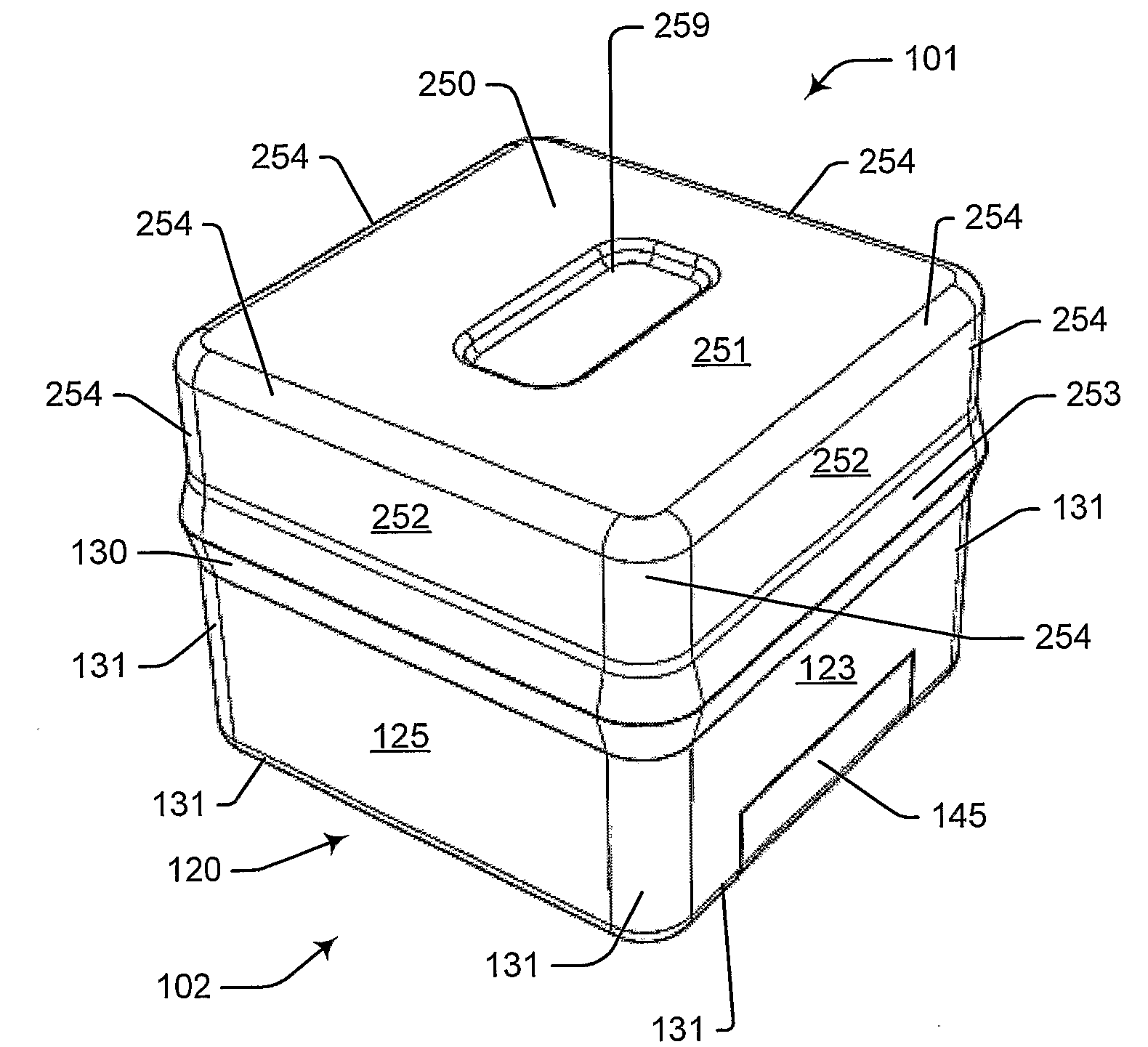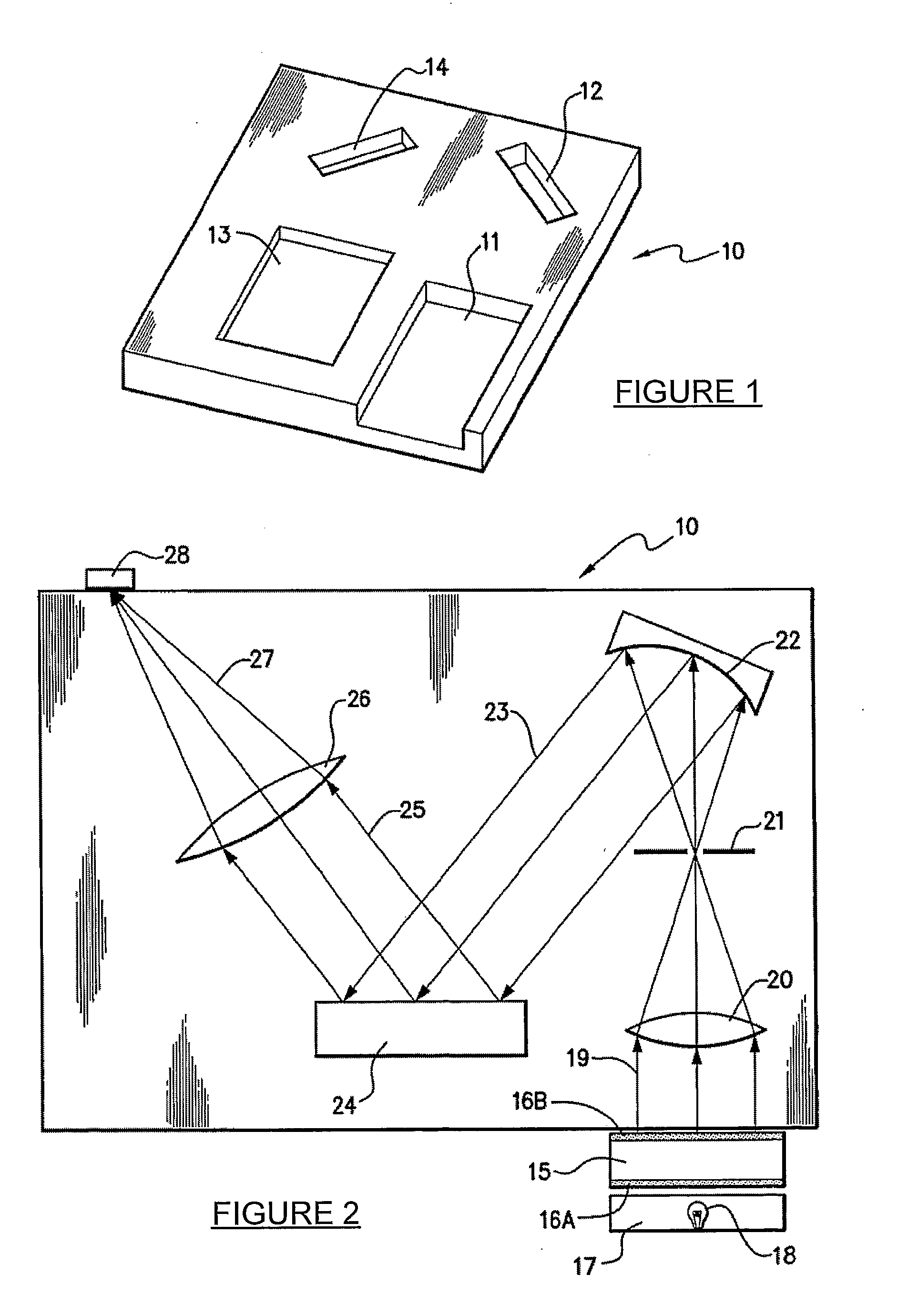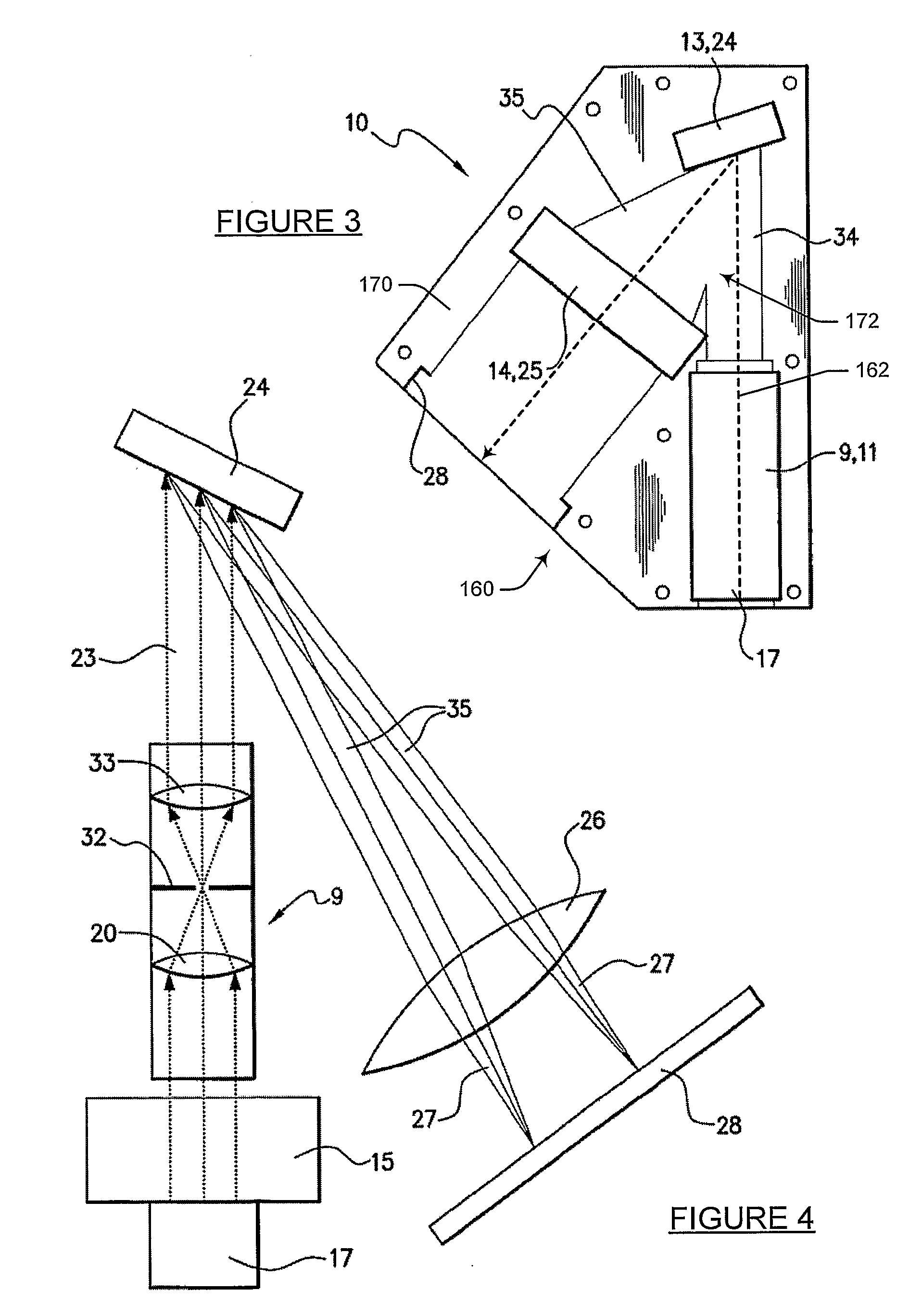System for detecting one or more predetermined optically derivable characteristics of a sample
a sample and optical derivation technology, applied in the field of system for detecting one or more predetermined optical derivation characteristics of a sample, can solve the problems of inability to accurately detect the output of such moisture meters using sophisticated and expensive near infrared technology, inability to use in the field, and inability to accurately detect the output of such moisture meters
- Summary
- Abstract
- Description
- Claims
- Application Information
AI Technical Summary
Benefits of technology
Problems solved by technology
Method used
Image
Examples
Embodiment Construction
[0116]FIG. 1 shows a thick base plate 10 of a stable plastic material such as PVC which is typically 12 mm thick. It has deep mounting recesses 11 to 14 respectively for an optical barrel, a concave mirror, a reflection diffraction grating, and a focusing lens. The base plate 10 encapsulates these components by placement of a top plate 10, which is substantially a minor image of the base plate, on top of the base plate.
[0117]Referring now to FIG. 2, more detail is shown schematically of the components in the optical system. The apparatus has a sample container 15 mounted adjacent to the base plate 8 and adapted to contain a sample such as grain. A light source 17 having a halogen bulb 18 is mounted adjacent to the sample container 15 so that light from the bulb 18 passes through an inlet window 16A, is transmitted through the sample, and out through an outlet window 16B to form a beam 19 affected by the sample. This beam is incident on the optical barrel which comprises a lens 20 an...
PUM
| Property | Measurement | Unit |
|---|---|---|
| volume | aaaaa | aaaaa |
| thickness | aaaaa | aaaaa |
| thick | aaaaa | aaaaa |
Abstract
Description
Claims
Application Information
 Login to View More
Login to View More - R&D
- Intellectual Property
- Life Sciences
- Materials
- Tech Scout
- Unparalleled Data Quality
- Higher Quality Content
- 60% Fewer Hallucinations
Browse by: Latest US Patents, China's latest patents, Technical Efficacy Thesaurus, Application Domain, Technology Topic, Popular Technical Reports.
© 2025 PatSnap. All rights reserved.Legal|Privacy policy|Modern Slavery Act Transparency Statement|Sitemap|About US| Contact US: help@patsnap.com



